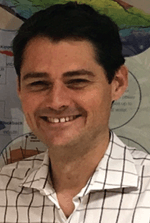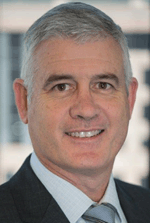Offshore gas field development – the ripple effect
Alan Black A C and Greg Saunders BA Esso Australia, 12 Riverside Quay, Southbank, Vic. 3016, Australia.
B Advisian, 333 Collins Street, Melbourne, Vic. 3000, Australia.
C Corresponding author. Email: alan.black@exxonmobil.com
The APPEA Journal 58(2) 695-699 https://doi.org/10.1071/AJ17157
Accepted: 22 February 2018 Published: 28 May 2018
Abstract
The Kipper field is developed via a subsea tieback to the West Tuna platform, and produced into the Gippsland gas processing facilities to supplement long-term energy supply in South-East Australia. During the 2010 Kipper development drilling campaign, mercury was detected in the reservoir fluids. This late discovery required a change to the Kipper development plan due to the ripple effect of mercury along the production path.
There are several key execution steps in brownfield concept design, and it is essential to select options that can cope with the reservoir variations and risks associated with tie-ins to brownfield assets. This paper describes how best practice execution was achieved by making good decisions when faced with change late in the field development cycle. The work highlights the benefits of having a clear understanding of the project drivers, options and brownfield constraints to select the right concept.
Despite delays to production start-up until 2017, the Kipper Mercury Removal Project was successfully installed, and work practices updated to allow the Kipper field to be safely produced.
Keywords: concept selection, Gippsland Basin, Kipper, mercury.

Alan Black holds a Bachelor of Chemical Engineering and Bachelor of Science from Melbourne University, as well as a Master of Technology (Petroleum) from Curtin University. He is a chartered member of IChemE. Alan is currently the Offshore Production Surveillance and Optimisation Advisor for Esso Australia. He joined Esso Australia in 2008 as a process engineer for the Gippsland production business. From 2010 he was the scoping engineer for the Kipper Mercury Removal project taking the project from initial issue identification through to FEED. Prior to joining Esso Australia he worked for Shell in production and project roles in the North Sea and Russia. |

Greg Saunders holds a Bachelor of Chemical Engineering (Hons) from the University of Queensland. Greg is a Senior Associate with Advisian and has 30 years of experience in the upstream (offshore and onshore) oil and gas industry in a variety of project management, engineering and operational roles with ExxonMobil and Woodside. Greg’s experience over the past 10 years with the WorleyParsons Group has been focussed on feasibility and concept study execution. Greg was Advisian study manager for the Kipper Mercury Removal Project during the feasibility, concept selection and FEED phases. |


